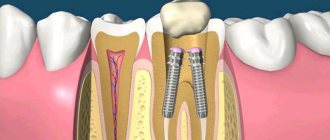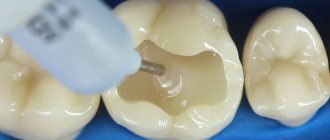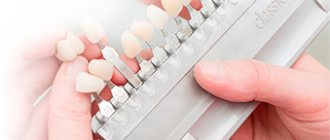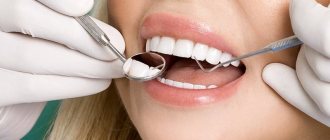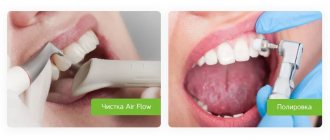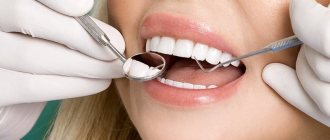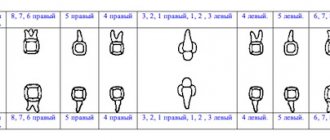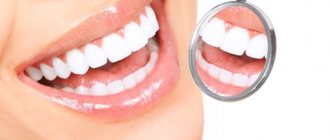Thanks to modern technology, visiting the dentist has become a simple and painless procedure that allows you to monitor your oral health and identify and eliminate various problems. The best material used for filling teeth today is Estelite - a composition that has no analogues in terms of durability, ease of use and reliability.
Characteristics and properties
Estelite (Estelite Sigma Quick) is a development from Japan, created and used for dental filling. High indicators of light curing, radiopacity and polymerization speed guarantee the appropriate quality of the finished fillings.
The composition is based on silicon-zirconium mass, the total share of which exceeds 80%. Its use is the key to minimal shrinkage of the processed material, resistance to wear and abrasion. The color range, numbering two dozen shades, and the long-term preservation of aesthetic properties maintained by polishing allow Estelite to be effectively used in various medical situations.
General overview
The universal light-curing composite material Estelite is produced by the Japanese company Tokuyama Dental.
The radiopaque composite includes a submicron filler that allows you to restore the integrity of the anterior and lateral teeth affected by caries.
The drug is ideal for use in carious cavities of all classes, and is a set of universal elements with enhanced radiopacity and light-curing characteristics.
The high aesthetic factor in tandem with the increased speed of the polymerization process has increased the popularity of the material around the world . Today it ranks among the best dental products among existing composite materials.
Features of application
During use of the composition, the monomer is filled to 100%, forming a solid structure. Simultaneous filling of dentin fragments promotes uniform demineralization and penetration of adhesive elements inside. The composition is characterized by stable adhesive strength indicators, which are not affected by the quality of the working area.
To determine the filling boundary, dentists rely on the colored pigment, which subsequently disappears from the surface of the tooth. After polymerization, the composition reduces the permeability and sensitivity of the enamel.
Precautionary measures
The use of any dental material requires compliance with safety measures. The Estelite filling is no exception to these rules.
The list is as follows:
- Professionalism is required. Only professional dentists who have a license to practice can use the material to fill cavities.
- Check authenticity. It is prohibited to use filling material if there is a suspicion of its authenticity and in the case when a doctor comes into contact with a product with damaged packaging.
- You need to be sure that you are not allergic. If allergic reactions to the drug occur, you must immediately stop using it.
- At all stages of working with the material, the physician must wear gloves. They will act as protection against allergic reactions to methacrylic pressure gauges.
It is important to know that most of these substances have the ability to penetrate the latex protective layer, so after filling it is important to thoroughly wash your hands under running water. - Direct contact of the product with the skin is unacceptable. If the material comes into contact with the skin or eyes, the affected area should be immediately rinsed with water and an appointment with a specialized doctor should be made.
- Caution in use. To avoid harm to health, inhalation of material vapors and ingestion of its particles is contraindicated.
- Immediately after filling, the patient should thoroughly rinse the mouth with plenty of clean water.
- Processing of tools . The tools used for mixing and applying the material are treated with an alcohol solution.
- At all stages of working with the material, specialists must wear safety glasses in front of their eyes.
Indications for use, preparation and application
The universal characteristics of high-quality fillings formed using Estelite provide a wide range of possibilities for use. Possible clinical indications include:
- restoration of the frontal jaw area;
- correction of surface defects on enamel;
- direct restoration of the base layer;
- restoration of installed prostheses;
- elimination of gap-like spaces and diastemas;
- therapeutic prevention of caries.
The presence of methacrylic-based monomers in the composition of the drug is a key factor limiting the possibility of use for people suffering from allergic reactions to compounds of this group. Intolerance to this element should be clarified before starting therapy.
When preparing the oral cavity for medical restoration, a number of procedures are performed in the required sequence:
- Cleaning the enamel layer using a special mass that does not contain fluoride;
- Selecting a color tone using a shade scale;
- Isolation of the dentition element using latex plates;
- Standard preparation followed by rinsing with water;
- Pulp protection with an artificial glass ionomer barrier;
- Application of the composition and formation of the restoration contour.
During the restoration process using Estelite, it is recommended to strictly follow the instructions for use. The composition is applied either directly into the working cavity of the tooth, or squeezed out of a syringe onto a separate tablet to give the desired consistency. The introduction into the hole is carried out layer by layer, without exceeding the depth, and each layer must undergo a polymerization procedure, the duration of which is determined by the manufacturer’s special table. It is important to note that mixing the composition with other restorative pastes leads to the formation of voids and defects in the final polymerization.
At the final stage, the finished filling is processed and polished using a fine-grained drill. To improve the aesthetic perception and appearance, fractional grinding technology is used at minimum speed, without the use of water. Proximal elements should be treated with vinyl or metal strips. The finished shape can be further polished using a special rubber nozzle or other device.
Medical Internet conferences
Introduction. Today, the market for dental and restoration materials provides a huge selection. It is necessary to be able to correctly and rationally, based on criteria important for the clinical situation, select material for restoration. To do this, this article provides a review of one of the most modern materials with a chameleon effect, and also uses a survey to identify the most popular restoration systems today.
Purpose of the work: to optimize and facilitate the selection of restoration systems.
Tasks:
1) Study materials that have a chameleon effect.
2) Identify the most popular restoration systems and the criteria that dentists rely on when choosing dental material.
3) Compare filling systems.
4) Simplify the choice of material for aesthetic restoration.
Materials and methods. An analysis of sources of reliable literature, scientific articles, monograms, as well as dissertations was carried out. A survey was also conducted among qualified dentists from both municipal clinics and private ones.
Results and discussion. Initially, in the production of restoration systems, simultaneously with the advent of light-curing composites, a direction was chosen to improve the aesthetic properties of these materials, such as increasing the color palette of both dentin and enamel shades. Recently, another direction has begun to develop in achieving the best aesthetic qualities, namely the summation of the optical properties of the material in a ready-made restoration, also called the “chameleon effect”
Materials with a chameleon effect already consider an innovative approach to the problem of aesthetics and camouflage of restoration, in particular at the level of perception by the human eye. Representatives: (Diamondbrite Microhybrid, Estelite (SIGMA QUICK), Brilliant New Line, GC G-Aenial universal flo (SYRINGE), Megafill MH.)
To look at the chameleon effect, we chose Diamondbrite Microhybrid. [1, 2, 4, 5, 6]
Main idea.
The chameleon effect in dentistry is the ability of a restoration to visually merge with the surrounding tooth tissue. The more this effect manifests itself, the more invisible the restoration is. Restorations that are made from one shade of material and do not exhibit a chameleon effect remain noticeable; what’s even worse, they clearly stand out from the living tooth structures, which is unacceptable for restoration in the frontal group of teeth. To achieve maximum compliance with a natural tooth, restorative systems are available in shades, each of which balances in three dimensions that determine color: color - the color itself in its pure form; saturation – color intensity; brightness – determines the degree of reflection of light.
The restoration material must also have additional optical characteristics, just like living tooth tissues: transparency - the ability to retain light or transmit it through itself; opalescence is a property that determines a pearlescent sheen in tooth structures; fluorescence - the ability to absorb and emit ultraviolet rays.
When making a restoration with materials that do not have a chameleon effect, the doctor will need to make more efforts in selecting the right shades, and also in the process of layer-by-layer application of these shades, this stage will take quite a bit of time, and if one mistake is made in one of these stages, the restoration will not be of sufficient quality in terms of aesthetics point of view.
If the doctor’s choice for restoration is a material with the above optical properties, then the restoration will fully meet aesthetic expectations and requirements. [1]
Mechanism of tooth color perception.
The perception of tooth color is determined by the refraction, reflection and scattering of light by various tooth structures. “Mirror shine” is given to the tooth by light of different wavelengths reflected from the smooth surface of the enamel. From inside the enamel organ, light reflection occurs from various tooth structures, namely: from enamel prisms, dentinal tubules, peritubular dentin, and the enamel-dentin junction. All together this creates a complex complex of light reflection.
Also, do not forget that some of the light waves, depending on their length, can be both reflected and absorbed by tooth structures. This effect is called molecular light scattering. It was first described by the scientist who received the Nobel Prize in 1904, Baron John Rayleigh. The definition of his discovery remained in history as [Rayleigh scattering - coherent scattering of light without changing the wavelength (also called elastic scattering) on particles, inhomogeneities or other objects, when the frequency of the scattered light is significantly less than the natural frequency of the scattering object or system. Equivalent formulation: the scattering of light by objects whose dimensions are smaller than its wavelength. To summarize all of the above, we can say that this property provides multi-level reflection of the components of the light beam. This can also be called diffuse reflection of light, which actually determines color, saturation, brightness, transparency and opalescence. Fluorescence is also determined by the ability of structures to emit light [3, 10].
The mechanism of perception and reflection of light from a restoration made of chameleon material.
The structure of chameleon materials creates a diffuse reflection of light similar to natural tooth structures. The effect of chameleon materials is based on the phenomenon of Rayleigh color scattering; just like in teeth, they contain a variety of multi-surface structures. The ratio of various particles is chosen in such a way that together they create a complex set of mutual reflections of light, and due to their different reflectivity, they create a diffuse reflection of light. The light beam passes into the restoration and is reflected from the surface of the filler particles as well as from the tooth structures. As a result, aesthetically important characteristics such as reflection, refraction and diffusion of light within the chameleon restoration occur in the same way as in a natural tooth, and it merges with the surrounding tissues, being perceived as a single whole. In chameleon materials, it is important to take into account that the larger the area of contact of the composite with the hard tissues of the tooth, the more pronounced the chameleon effect, and thus the less noticeable the restoration. The particle structure of chameleon materials replicates the diffuse reflection of light from a natural tooth. These materials also have good polishability, which brings the restoration to a dry shine and is aesthetically regarded quite highly.
It is the content of multi-surface particles in the composition of chameleon materials that makes it possible to achieve high quality aesthetics. Materials that do not have the effect described above require careful selection of shades for restoration, as well as careful selection of their combinations with each other; chameleon materials do not have this problem. [1, 7-9]
Summarizing the analyzed characteristics and mechanisms of operation of chameleon materials, we can identify several advantages in working with these materials.
1. Simplified selection of color and shade for restoration.
2. Saving working time.
3. The finished restoration meets all aesthetic standards, merging with the natural tissues of the tooth, and is completely invisible to the human eye.
We also conducted a survey among dentists in the Kirov district of Saratov to identify the most popular materials today.
With the help of a survey among highly qualified dentists in the city of Saratov, Kirovsky district, answers to the questions posed were received:
1) What restoration material is most popular among dentists today?
2) The criteria that dentists rely on when choosing a filling material.
3) Do dentists know about the latest modern restorative systems that have a chameleon effect? And also answer the question of whether they would like to use these systems in their clinical practice and why.
The most popular restorative materials according to surveyed dentists of different age groups, as well as with different clinical experience (from 1 year to 34 years) are:
Figure 1 Popularity of restoration systems.
As can be clearly seen in the diagram, 4 filling systems top the list of the most relevant materials, of which Filtek Uitimate from 3M Espe received the most votes. More than half of the surveyed dentists work with this material. Following it is Filtek Z 250, which is used by slightly less than half of the surveyed dentists, Estet - x HD from the company (Dentsplay) is not far behind in popularity, this material was chosen by a third of the surveyed audience, and the top 4 most popular materials are completed by Estelite from the Japanese company (Tokuyama Dental ) slightly less than a third of all doctors surveyed preferred this material. 5th place was shared by 4 filling systems: Vitremer from the company (3M Espe), SDR from the company (Dentsply), Tetric N - Ceram from the company (Lvoclar Vivadent), Filtek Z 550. Further 6th place in our study is occupied by the following systems: Eetelite Asteria from the company (Tokuyama Dental) , Gradia Direct AnteriorPosterior, IPS Empress Direct from Lvoclar Vivadent, Charisma from Heraeus Kulzer. Next, we will look at what criteria dentists relied on when choosing a material.
In the survey, after choosing the materials they work with, they were asked to indicate the criteria they relied on when choosing materials. Dentists were offered 5 options:
1) Practicality (ease of use)
2) Cheap
3) Quality (durability)
4) Aesthetics
5) Other______ (indicate your option)
In percentage terms, the main criteria for choosing a dental material are: quality (durability), practicality (ease of use), aesthetics. Moreover, you should pay attention to the fact that quality, as a selection criterion, is ahead of all others, and cheapness is in last place with zero choice. It is also worth noting that 7% of respondents indicated this option as “available” - this indicates unresolved problems today with equipping offices with modern filling systems, as well as the impossibility of choosing the most suitable material for the clinical situation. Such a criterion as “cheapness” did not receive attention at all.
Our survey also asked us to answer the question: Have you worked or would you like to work with chameleon-effect filling systems? And why?
Based on the results of the last question, it can be judged that 80% of dentists would like to work with materials with a chameleon effect, 20% of all respondents do not know about their existence at all, and 0% of people gave negative feedback to materials with this effect. Based on this, we can talk about the high relevance of such systems.
The doctors also indicated why they would like to work with such systems:
Agreeing that they would like to work with systems with a chameleon effect, dentists noted such a criterion as “good aesthetics,” followed by practicality (ease of use), as well as an interest in new technologies.
Based on the survey, we have already identified 4 filling systems that are the most relevant today among dentists (Filtek Uitimate (3M Espe), Filtek Z 250, Estet - x HD (Dentsplay), Estelite (Tokuyama Dental)).
The following are subjective comparisons of these materials with materials that have a chameleon effect, representatives:
Diamondbrite Microhybrid, ESTELITE (SIGMA QUICK), Brilliant New Line, GC G-ÆNIAL UNIVERSAL FLO (SYRINGE), Megafill MH.
For comparison, we took Diamondbrite Microhybrid material
“+++” the material receives an “excellent” rating for this criterion
“++” material receives a “good” rating for this criterion
“+” the material receives a “satisfactory” rating for this criterion
“—” the material receives a “bad” rating for this criterion
Conclusions:
1) During the study of materials with a chameleon effect, it was revealed that these materials are the future of aesthetic restoration, since due to their properties they significantly simplify the work of the dentist, and also allow them to achieve the desired aesthetic effect.
2) Using a survey, we identified the most popular restoration systems and the criteria that dentists rely on when choosing dental material. The most popular materials were: Filtek Uitimate from the company (3M Espe), Filtek Z 250, Estet - x HD from the company (Dentsplay), Estelite from the Japanese company (Tokuyama Dental)
3) We carried out a comparison of filling systems, with the help of which we identified the weaknesses and strengths of a material that has a chameleon effect and materials that do not have this effect; the comparative table clearly shows that materials that do not have this effect are inferior in aesthetic terms.
4) Based on our research and survey with subsequent comparison, it can be argued that the information presented will help guide the choice of dental restoration systems.
Advantages of Estelite
- Precise contact does not allow caries to stand out.
- All-ceramic crowns are stronger than metal-ceramic crowns and will serve you reliably and for a long time.
- Biocompatibility of matter with gum tissue.
- Good light transmission and a wide range of colors in the palette.
- Due to the natural transition of color from the pointed edge to the dentin, crowns are difficult to distinguish externally from natural teeth. A combination of color and shape from a healthy tooth.
- To avoid injury to healthy teeth with a prosthetic crown, its abrasion is exactly close to the abrasion of natural teeth.
- Lasting protection from negative influences from outside substances and microorganisms.
And now, of course, a little about the installations in our clinics, read on.
Estelite Sigma Quick shades
A1, A2, A3, A3.5, A4, A5, B1, B2, B3, B4, C1, C2, C3, OA1, OA2, OA3, OPA2, BW (Bleach White), WE (White Enamel , white enamel) and CE (Clear Enamel/Incisal, transparent enamel/incisal shade).
Opalescent shades (OA1, OA2, OA3) have adequate degree of opacity necessary to block the darkness of the oral cavity (restoration of class III and IV cavities)
Opalescent shades can also be used as dentin shades for layer-by-layer multi-shade restorations. The shades OA1, OA2 and BW are well suited for the restoration of primary teeth. However, they are not intended for use as camouflage agents for metal teeth or highly discolored teeth such as tetracycline teeth.
OPA2 is intended for use as a camouflage agent for the treatment of minor stains, as well as for the restoration of opaque teeth (applied in a thin layer to the lingual wall of a Class III and IV cavity).
Reviews
Nanocomposite Estelite is a high-quality and reliable dental product that greatly simplifies the work of a specialist. It is difficult to find an identical composition among filling materials.
If you have already had to restore teeth using Estelite, and after reading the article you would like to share your feedback about the advantages or disadvantages of the presented filling, leave your review in the comments below.
If you find an error, please select a piece of text and press Ctrl+Enter.
Tags filling fillings
Did you like the article? stay tuned
No comments yet

